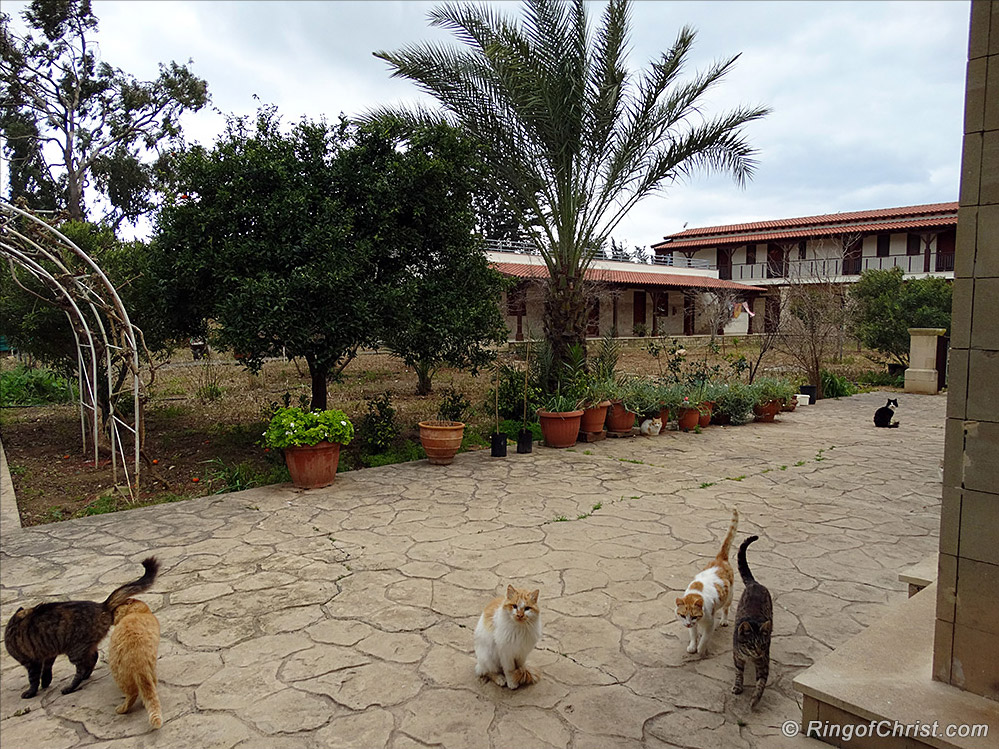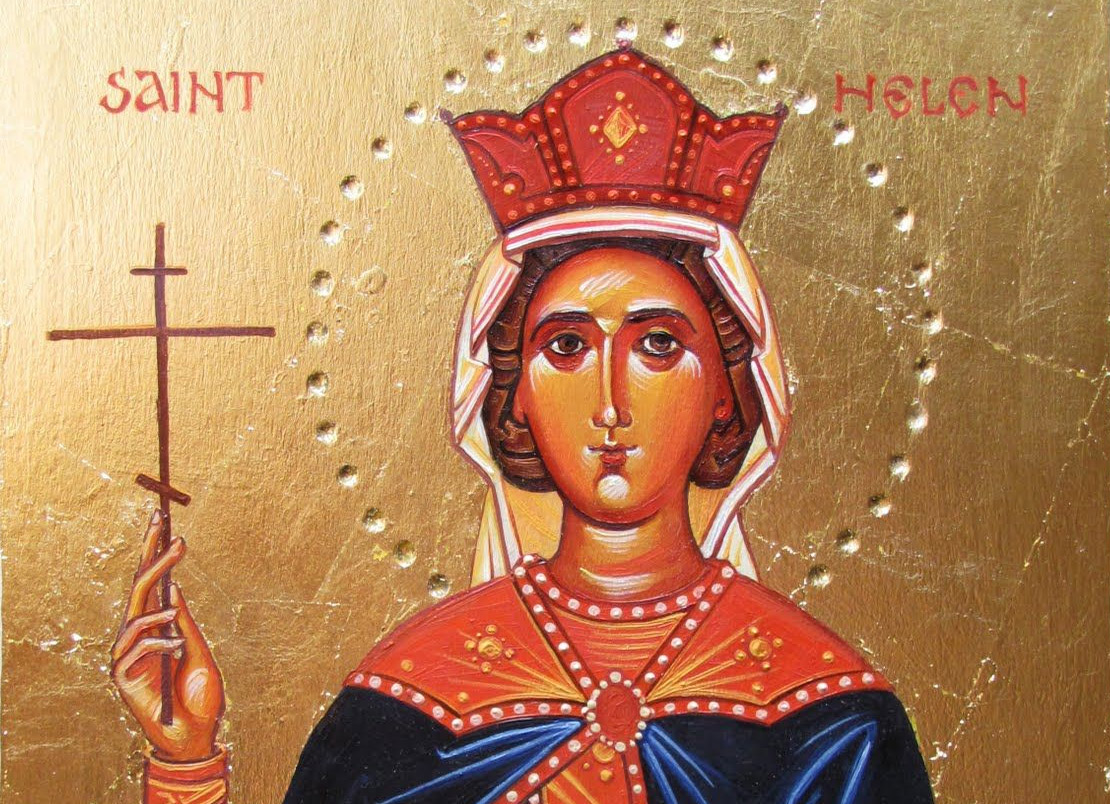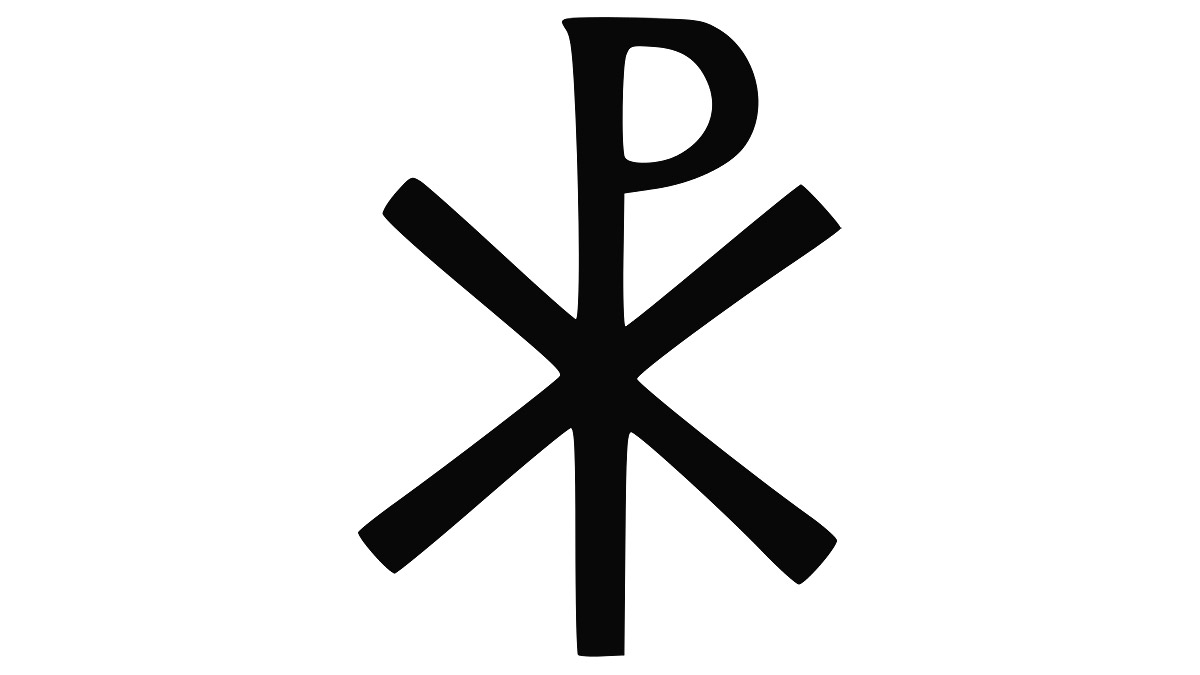While Constantine was keeping his empire on course, his Christian mother was busy looking for original Christian sites in the Holy Land. Determined to find Golgotha, she went to Jerusalem (364-368AD) and after some coercion of local officials, they finally confirmed that the holy site she sought lay under the temple of Venus.
The Romans, thinking they could stop the early Christians from praying at the place where their Savior died, built a temple over it. The irony being, of course, that the Romans had inadvertently preserved the exact place of the crucifixion by covering the site with a pagan temple.
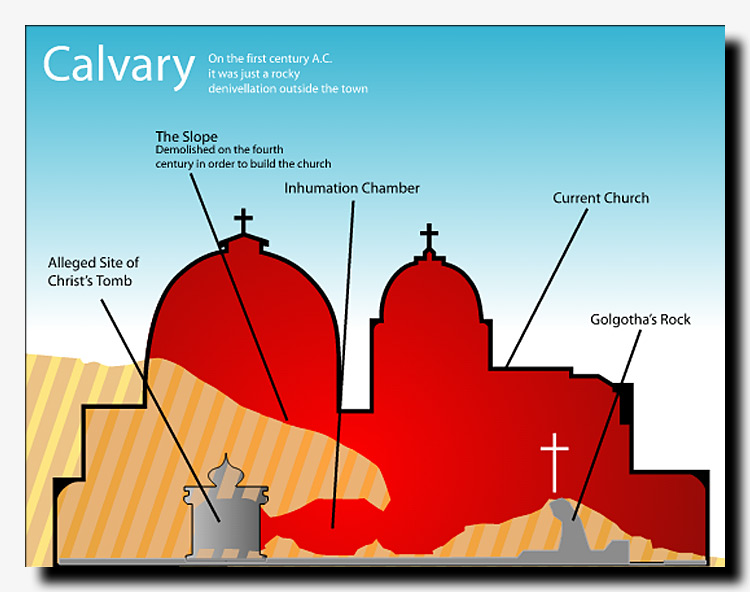
Tradition has it that when Helen commanded that the temple be torn down; three crosses were found at the base of the rock. There was no longer any doubt in anyone’s mind as to which was the true cross after Helena ordered that a very sick person be laid on each of the crosses. The cross that cured the person was the Savior’s. She took the cross and started home to Constantinople, Constantine’s newly established capital city, but on the way there, she stopped in Cyprus according to Cypriot tradition.
This description of the discovery of the True Cross is related by Socrates Scholasticus (born 380AD) in his Ecclesiastical History. Constantine ordered Macarius, Bishop of Jerusalem to build a church over the site where the three crosses were found, the site of the crucifixion; that church was the first Holy Sepulchre.
Socrates also states that three nails were found that were sent to Constantinople. Stavrovouni Monastery has one left by St. Helena.
Helena founded the monastery of Stavrovouni, the Mountain of the True Cross, where she left a small piece of the relic, even the sawdust was treasured. In Kouka a small church is said to contain the sawdust collected when the true cross was cut into pieces.
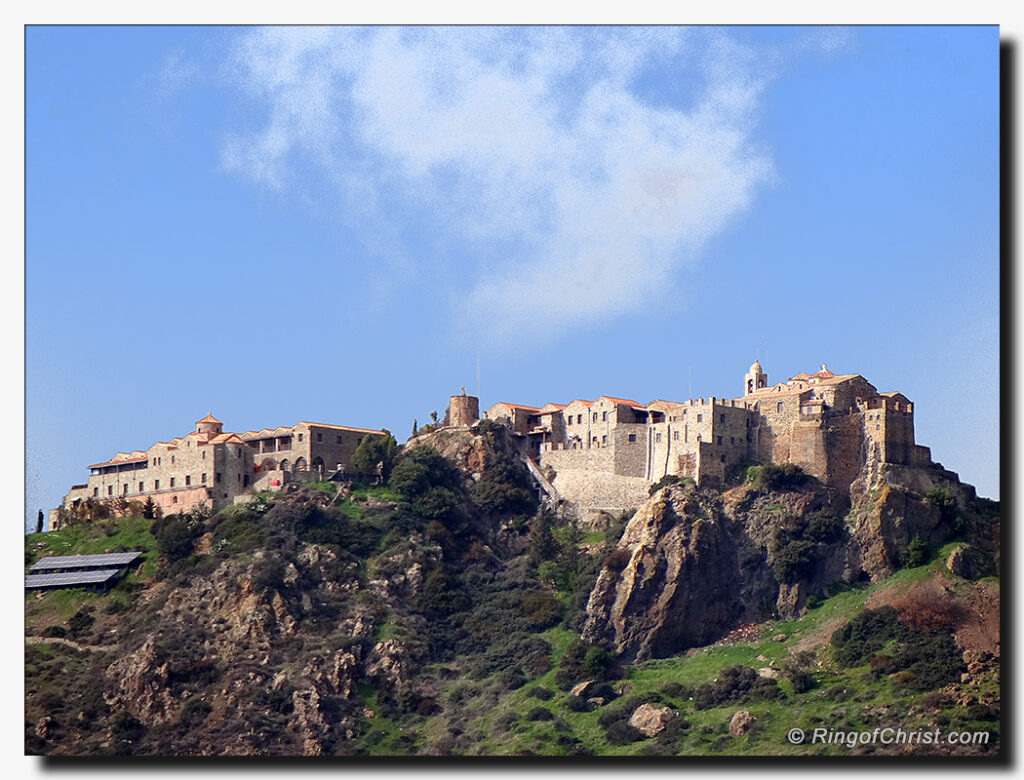
Local tradition has it that St. Helena also founded the monastery of St. Nicolas of the Cats on the Akrotiri Peninsula in southern Cyprus when she brought a boatload of cats to the island to control its immense snake population.
Today, St. Nicolas Monastery is a cat sanctuary.
